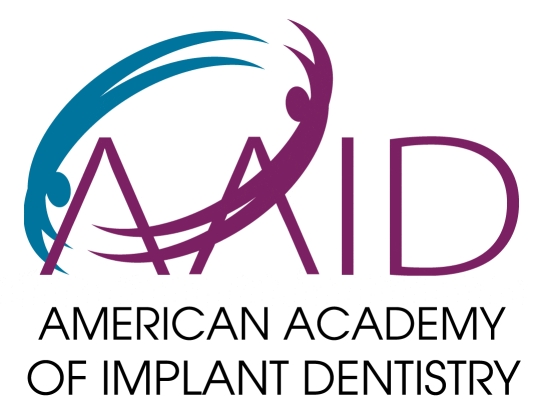As a dentist at Lansdowne Family Dental, I’ve guided countless patients through their orthodontic journey, and one of the most frequent concerns I hear is: “Does Invisalign require tooth extraction?” This is an understandable worry – many people associate orthodontic treatment with having teeth removed. The good news is that Invisalign often provides a more conservative approach to teeth straightening. Let me walk you through everything you need to know about Invisalign and tooth extraction requirements.
Does Invisalign Require Tooth Extraction?
No, Invisalign does not automatically require tooth extraction. In fact, many Invisalign cases are completed successfully without removing any teeth. However, the need for extraction depends on your specific orthodontic situation, the severity of crowding, and your treatment goals.
The beauty of Invisalign lies in its ability to work with your natural teeth structure in most cases, using advanced planning technology to find conservative solutions that preserve your natural smile.
Understanding Invisalign
Before we address the extraction question, let’s briefly review what Invisalign is and how it works.
What is Invisalign?
Invisalign is an innovative teeth-straightening treatment that uses clear, removable aligners to gradually move teeth into their desired positions. At Lansdowne Family Dental, we use Invisalign’s SmartTrack material, a flexible thermoplastic specifically designed for this treatment.
How Does Invisalign Work?
- Digital Scanning: We start with a 3D digital scan of your teeth.
- Custom Treatment Plan: Using this scan, we create a personalized treatment plan.
- Aligner Fabrication: Custom aligners are manufactured based on your treatment plan.
- Progressive Treatment: You’ll wear each set of aligners for 1-2 weeks, moving to the next set as your teeth shift.
- Regular Check-ups: We’ll monitor your progress every 6-8 weeks.
Can Invisalign Help Avoid Tooth Extraction?
Now, let’s address the central question: can Invisalign help you avoid tooth extraction? The short answer is: sometimes. Invisalign can effectively treat many orthodontic issues while potentially eliminating the need for tooth extractions in some cases. However, it’s not a universal solution, and the decision depends on several factors.

When Invisalign Typically DOESN’T Require Extraction
Invisalign can successfully treat many orthodontic issues without tooth removal:
Mild to Moderate Crowding
Invisalign can often expand the dental arch, creating more space for crowded teeth to align properly. This is particularly effective in the lower arch, where a technique called “dental expansion” can create additional space without extractions.
Gaps Between Teeth
Invisalign excels at closing gaps without the need for extraction. The aligners gradually bring teeth together, eliminating spaces while maintaining proper tooth proportions.
Bite Issues
Many overbites, underbites, and crossbites can be corrected with Invisalign alone. The system can shift both upper and lower teeth to improve bite alignment without removing teeth.
Tooth Protrusion
In cases where teeth stick out, Invisalign can often retract the teeth back into proper position without the need for extraction, especially when combined with other techniques.
👉 Book an Invisalign Appointment Today!
The Power of 3D Planning in Avoiding Extractions
One of Invisalign’s key advantages is the ability to plan treatment in three dimensions. This allows us to:
- Visualize the entire treatment process before it begins
- Identify potential space-creating opportunities
- Simulate different treatment approaches to find the most conservative option
To schedule your Invisalign treatment in Ashburn, Leesburg, or Lansdowne, VA, choose Lansdowne Family Dental for quality dental care. We offer various dental services with a patient-centric approach. Start your dental journey with us. Contact us!
Alternative to Extraction: Interproximal Reduction (IPR)
One of Invisalign’s greatest advantages is the ability to use IPR instead of extraction in many cases.
What is IPR?
Interproximal reduction (IPR), also called teeth slenderizing, involves removing a small amount of enamel from the sides of certain teeth to create additional space.
IPR Benefits:
- Conservative approach: Typically removes less than 0.5mm of enamel per tooth
- Painless procedure: Doesn’t require anesthesia
- Effective space creation: Can resolve mild to moderate crowding
- Preserves teeth: Keeps all your natural teeth intact
- Quick procedure: Usually completed in one appointment
When Invisalign Might Still Require Extraction
While Invisalign can often help avoid extractions, there are situations where tooth extraction may still be the best course of action:
- Severe Overcrowding: In cases of extreme crowding, where there simply isn’t enough jaw space to accommodate all teeth properly, extraction may be necessary to create sufficient space for proper alignment.
- Tooth Decay or Damage: If a tooth is severely decayed or damaged, extraction may be required for oral health reasons, regardless of orthodontic treatment.
- Impacted Wisdom Teeth: Invisalign doesn’t address impacted wisdom teeth, which may need to be removed separately. In fact, removing problematic wisdom teeth before starting Invisalign treatment can sometimes create beneficial space.
- Skeletal Discrepancies: Some jaw alignment issues may require a combination of extraction and orthodontic treatment. This is particularly true in cases of severe overbites or underbites where the underlying issue is skeletal rather than dental.
- Periodontal Health: In some cases of advanced gum disease, strategic extractions might be necessary to improve overall oral health before or during orthodontic treatment.
Invisalign Extraction Cases: What to Expect
If your case does require extraction, here’s what the process typically involves:
Pre-Extraction Planning
- Detailed analysis of which teeth to remove
- Coordination between oral surgeon and orthodontist
- Timeline planning for extraction and Invisalign start
Extraction Process
- Simple or surgical extraction depending on tooth position
- Healing period of 2-4 weeks before starting Invisalign
- Possible temporary retainer to maintain spacing
Post-Extraction Invisalign
- Custom treatment plan accounting for extraction spaces
- Gradual space closure with controlled tooth movement
- Regular monitoring to ensure proper healing and movement
The Invisalign Assessment Process: Determining Your Best Treatment Path
At Lansdowne Family Dental, we take a comprehensive approach to determine if Invisalign is right for you and whether it can help you avoid extractions. Here’s what you can expect:
- Comprehensive Oral Examination: We thoroughly assess your teeth, gums, and overall oral health. This includes checking for any existing dental work, signs of decay or gum disease, and evaluating your bite.
- X-rays and 3D Imaging: We use advanced imaging techniques to evaluate your bone structure, tooth positioning, and root alignment. This gives us a complete picture of your oral anatomy.
- Treatment Planning with ClinCheck: We use Invisalign’s ClinCheck software to create a detailed treatment plan. This allows us to:
- Simulate different treatment approaches
- Visualize the end result before treatment begins
- Determine if extractions can be avoided
- Discussion of Options: We’ll explain all your treatment options in detail, including:
- Whether Invisalign can help you avoid extractions
- Potential alternatives like IPR
- The pros and cons of each approach
- Expected treatment duration and outcomes
- Personalized Treatment Recommendation: Based on our comprehensive assessment, we’ll provide a personalized treatment recommendation tailored to your specific needs and goals.
Advantages of Avoiding Extraction with Invisalign
If we can achieve your desired results without extraction, there are several benefits:
- Preservation of Natural Teeth: Keeping your natural teeth is always preferable when possible. Your natural teeth are strongest and best suited for biting and chewing.
- Less Invasive: Avoiding extraction means a less invasive overall treatment process. There’s no need for surgical intervention, reducing potential complications and recovery time.
- Faster Treatment: In some cases, treatment without extraction can be completed more quickly. There’s no healing time needed for extraction sites.
- Aesthetic Results: Maintaining all your teeth can often lead to a fuller, more natural-looking smile. This is particularly important for adults who may be concerned about the aesthetic impact of having teeth removed.
- Maintained Facial Structure: Your teeth play a role in supporting your facial structure. Keeping all your teeth can help maintain your natural facial contours.
Potential Challenges of Non-Extraction Treatment
While avoiding extraction is often desirable, it’s important to be aware of potential challenges:
- Treatment Duration: In some cases, non-extraction treatment may take longer, especially if significant tooth movement is required.
- Stability: In severe crowding cases, non-extraction treatment may result in less stable results, potentially increasing the risk of relapse.
- Limitations: There may be limitations to how much the teeth can be moved without extractions, potentially impacting the final aesthetic result.
The Importance of Retention After Invisalign Treatment
Regardless of whether your Invisalign treatment involves extractions or not, proper retention is crucial for maintaining your results. After active treatment, you’ll need to wear retainers to prevent your teeth from shifting back to their original positions. We typically recommend:
- Full-time retainer wear for the first few months after treatment
- Nightly retainer wear indefinitely to maintain your results long-term
Conclusion: Is Invisalign Right for You?
While Invisalign can often help avoid tooth extraction, it’s not a one-size-fits-all solution. The best treatment plan depends on your individual needs, the complexity of your case, and your overall oral health. Factors to consider include:
- The severity of your orthodontic issues
- Your age and oral health status
- Your lifestyle and ability to comply with treatment requirements
- Your personal preferences and smile goals
At Lansdowne Family Dental, we’re committed to finding the most effective and least invasive treatment option for each patient. We combine our clinical expertise with advanced technology to provide personalized care that addresses your unique needs.
If you’re considering orthodontic treatment and want to explore whether Invisalign could help you avoid extraction, we encourage you to schedule a consultation with us. During this visit, we can:
- Assess your specific case
- Discuss your smile goals
- Explain your treatment options in detail
- Answer any questions you may have about Invisalign or other orthodontic treatments
Remember, every smile is unique, and so is every treatment plan. We’re here to guide you through your options and help you achieve the healthy, beautiful smile you deserve – with or without extractions. Your journey to a straighter smile starts with a conversation, and we’re here to listen and provide expert guidance every step of the way.






